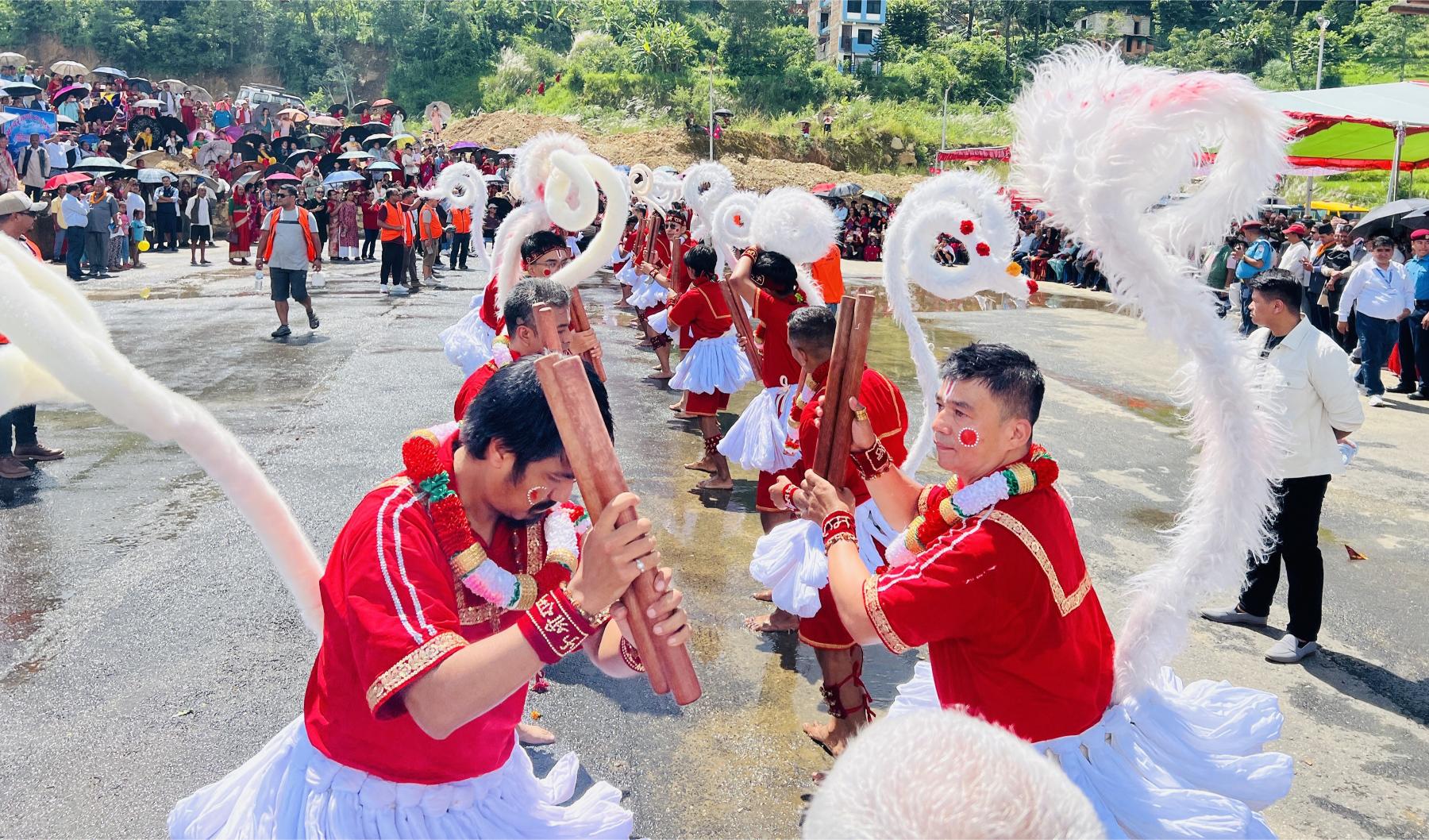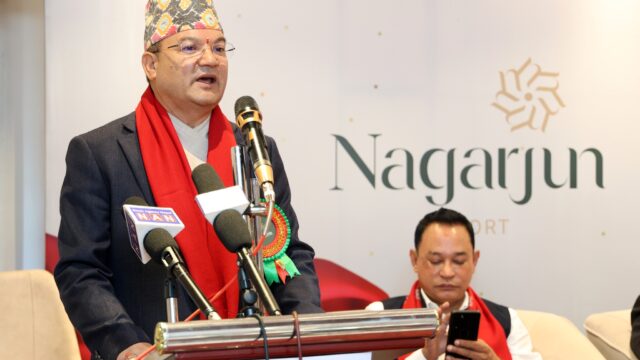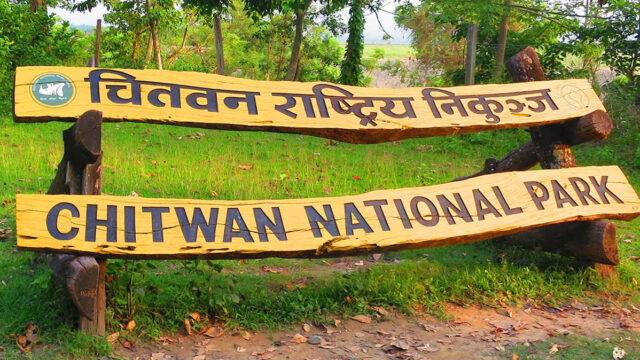The historic Hanuman Dance, which began last Saturday evening, transformed Kinaratol in Baglung Bazaar into a lively celebration. Crowds of people gathered late into the night to witness the performance, enjoying the cultural heritage of their ancestors.
The performers, dancing to the rhythmic beats of mridanga and jhyali while skillfully wielding sticks, captivated the audience. Among the distinguished guests present was Krishna Prasad Pathak, Minister of Health for Gandaki Province.
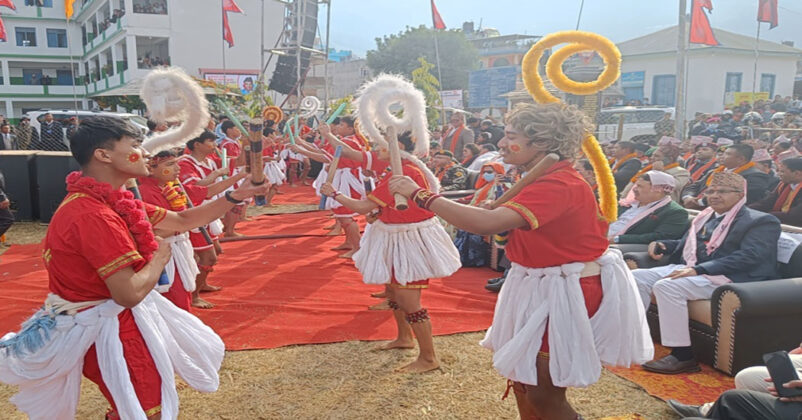
This marked the third official performance of the Hanuman Dance since its revival on Bhadra 11 (August-September) after a nine-year gap. The event was previously performed at Narayan Chowk (Baglung Municipality-3) on Bhadra 11 and Loktantrik Chowk (Ward 2) on Mangsir 15 (November-December) before reaching Kinaratol (Ward 3) last Saturday.
According to Tirtha Prasad Shrestha, Chairman of the Hanuman Conservation Council, the next performance is scheduled for Fagun 10 (February-March) at Radha Krishna Tol.
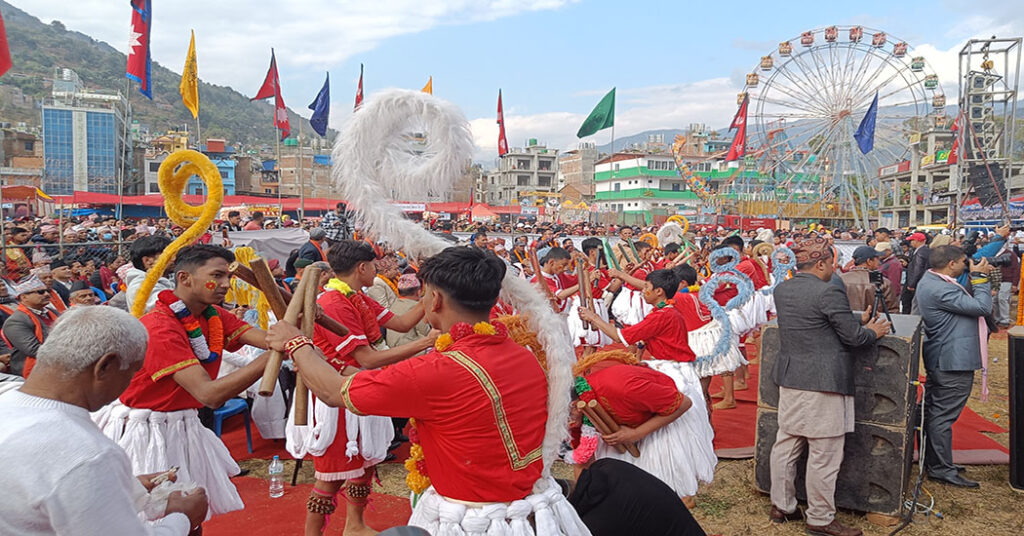
The Hanuman Dance tradition begins with the installation and worship of Hanuman’s idol at Narayan Chowk. On the same day, a special ritual takes place at Bhimsen Temple, including the sacrificial offering of a goat. Once initiated, the dance is performed in various neighborhoods, known as “Tol Pooja”.
The council states that the dance can also be performed outside the district upon request. After the completion of the neighborhood performances, the Hanuman Dance will be formally concluded for this season. Previously, the dance was officially performed in 2063 BS (2006) and 2072 BS (2015).
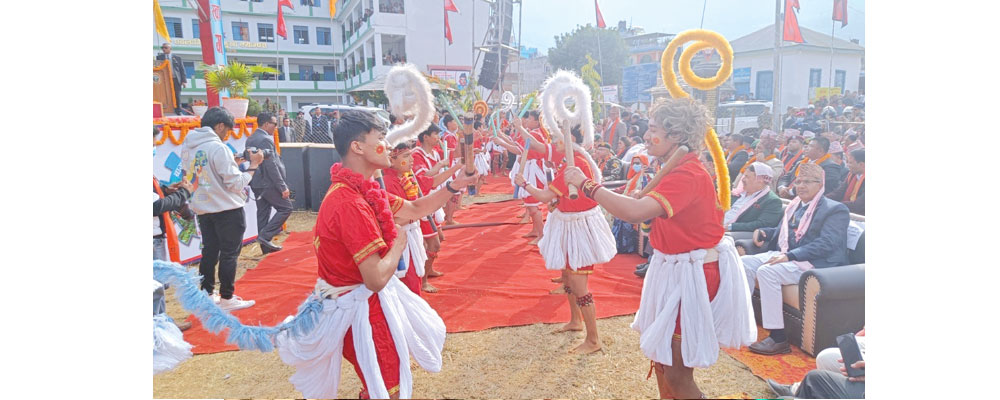
Despite being featured in festivals and cultural exhibitions, organizing a full-fledged Hanuman Dance is challenging due to its high cost. It requires a large number of performers and organizers, making it time-consuming to prepare. The dance has previously been showcased in Kathmandu, Bhaktapur, Pokhara, and Bhairahawa. Although it was initially planned to conclude by the last Tuesday of Chaitra (March-April), the performances might extend into Baisakh and Jestha (April-June).
Though it originated in Bhaktapur, the Hanuman Dance is now preserved only in Baglung and Beni, according to cultural expert Prem Chhote. The tradition follows a pattern of performances in odd-numbered years (3, 5, 7, or 9-year gaps). The dance is believed to invoke Hanuman’s strength, bring prosperity, and ensure well-being. It artistically portrays the courage, discipline, and devotion of Hanuman, one of the central figures of the Ramayana.
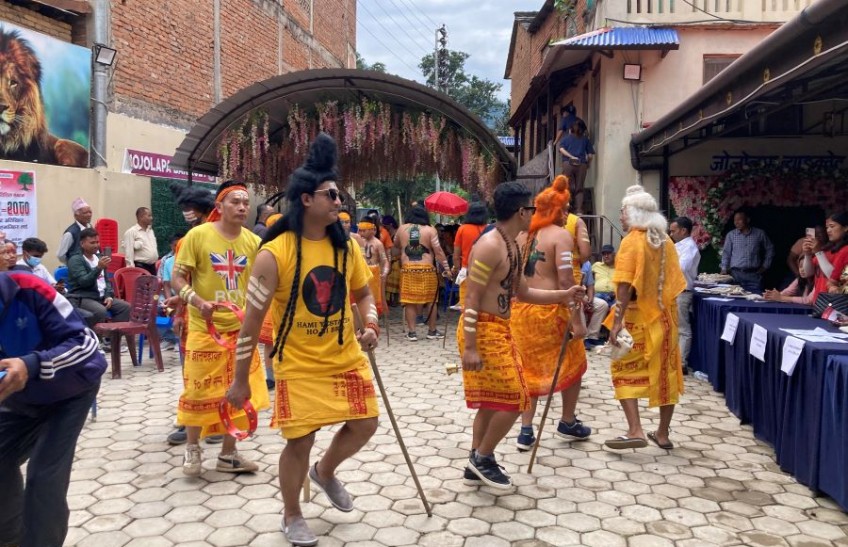
“The dance involves 13 pairs of performers embodying Hanuman’s form in an artistic display,” says Chhote. “It is performed in ten distinct rhythmic styles (taal). Though over 500 years old, the dance was brought to Baglung when Newar families migrated from Bhaktapur around 350 years ago.” Historical records indicate that Newars first settled in Baglung in 1768 BS (1711 AD).
The tradition traces back to King Bhupatindra Malla of Bhaktapur, who introduced the dance during the Malla era. It is traditionally performed only on Tuesdays, Thursdays, and Saturdays. Over time, performers from non-Newar communities have also started participating.
“The dance is expensive due to the large number of performers and elaborate arrangements,” Chhote explains.
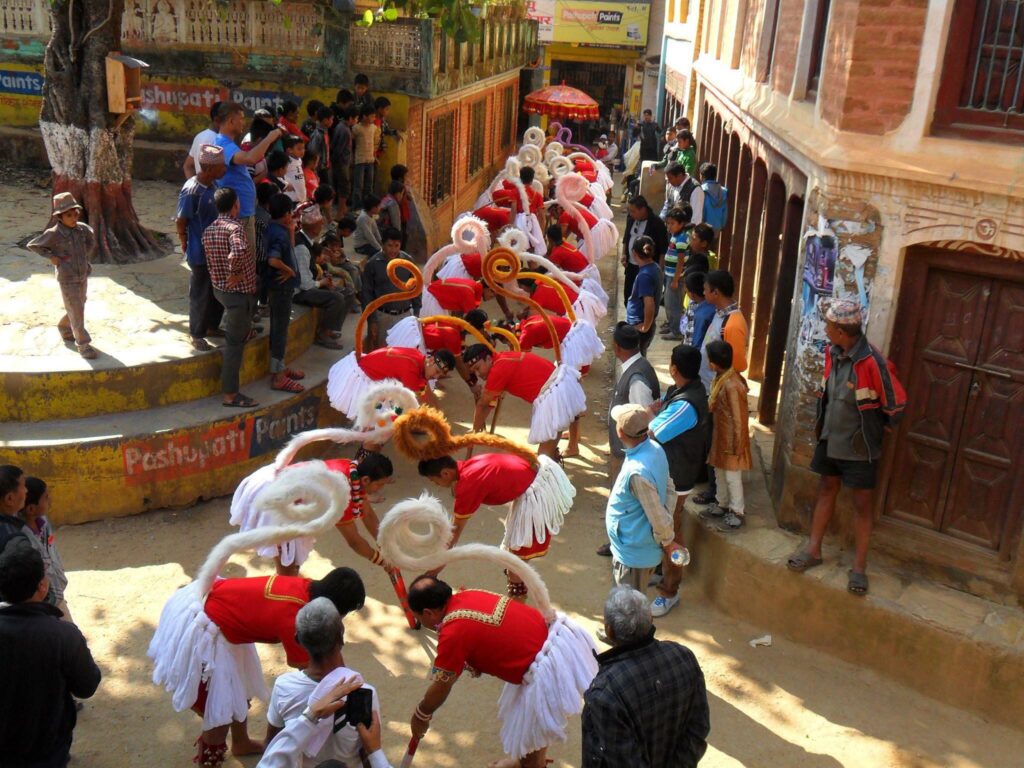
“Managing rituals, costumes, musical instruments, and other materials requires significant funds. The dance team consists of a chief organizer (Pradhan Kaji), assistant organizer, managers, priests, musicians, and artists, totaling over 100 people.” The Hanuman Dance is regarded as a cultural and historical treasure of Baglung.
According to lead musician Neeraj Shakya, the dance follows ten different rhythmic patterns, including Devalaya, Salami, Six-Taal, Eight-Taal, Twelve-Taal, and Twenty-Four-Taal. Performers dressed as Hanuman, complete with tails, engage in stick-fighting sequences synchronized with mridanga and jhyali beats. Some performers experience “Veer Utraney”, a trance-like state where their body shakes uncontrollably. If this happens, a priest helps them return to normal by making them inhale incense smoke.
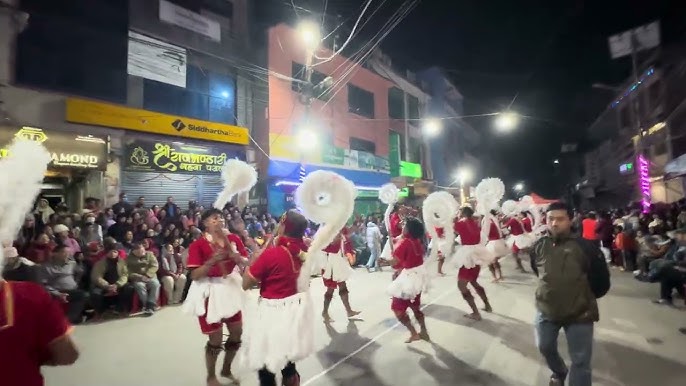
Veteran artist Shakya explains that the dance is choreographed based on events from the Ramayana, such as Hanuman’s journey to Lanka and his victorious battles. The performers use wooden sticks made from the Palash tree, known for their strength and distinct sound. The performance officially begins only after the lead performer (Jyamako) starts dancing.
While the tradition has faded in Bhaktapur, Baglung remains a stronghold for the Hanuman Dance. Younger generations have also shown interest, and before each season, performers undergo weeks of rigorous training. To preserve and pass down the tradition, the Hanuman Conservation Council regularly conducts training sessions, selecting around 50 young artists for each season. The establishment of the Hanuman Dance Conservation Council in 2046 BS (1989 AD) has played a crucial role in ensuring the survival and promotion of this cultural heritage.
